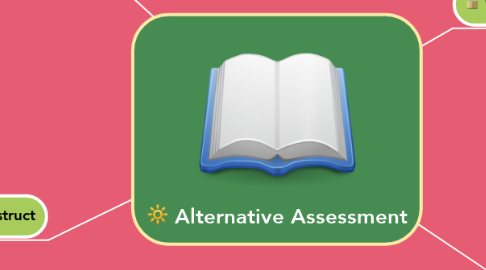
1. Disadvantages
1.1. Rating process is sometimes more subjective than traditional exams
1.2. The process can be costly in terms of time, effort, equipment, materials, facilities, or funds
2. Guidelines to construct
2.1. Define the instructional outcome you want to assess as clearly and unambiguously as possible in terms of both the subject-matter content and the set of skills or operations that a skillful performer would exhibit
2.1.1. Example: Students will perform five types of Cha Cha steps in correct dance position without error
2.2. Distinguish between those outcomes that can validly be assessed solely by performance assessments and those that can be assessed just as effectively by objective measures
2.2.1. Students would have a difficult time demonstrating dance steps on paper
2.3. Create tasks that elicit evidence of the student’s ability to perform the targeted skill
2.3.1. Task: Set aside a block of classroom time for students to dance with a partner, two or three couples at a time. Allow students to dance for at least 2 minutes so they have time to demonstrate all the steps they know. Students should have sufficient time to practice the steps before they are assessed
2.4. Decide what kinds of teacher guidance can be used while still allowing students the freedom to learn and do it their own way
2.4.1. Students may do the steps in whatever order they would like. Teacher may put the names of the different steps on the board to help students remember them if needed
2.5. Try out the assessment and make revisions as necessary
2.5.1. Revisions could include giving more detailed instructions and expectations to the students or inviting an assistant to write down dictated comments while the teacher keeps his or her attention on the dancers
